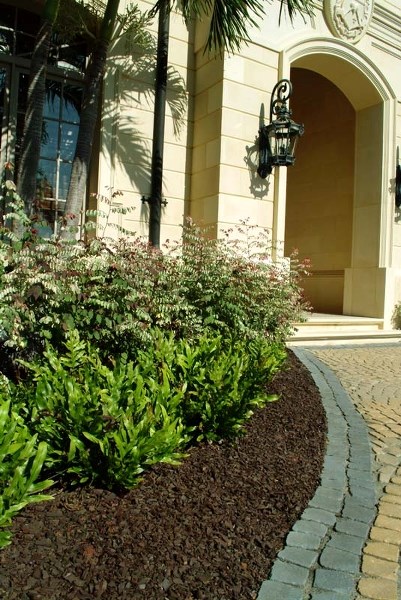For anyone wishing for an instant gardening fix that covers the weeds and looks pretty at the same time, decorative mulches could be the answer.
Landscapers are using mulch as part of the decorative appeal of their outdoor designs. In addition to the familiar wood or bark chips, they are layering a variety of materials such as coloured stones and rubber chips around shrub beds.
“Most popular right now for decorative purposes are black spruce mulch, limestone, lava, rundle rock and rainbow-coloured rock,” said Todd Strembitsky, owner of North Edmonton Landscaping.
Mulches serve two purposes in the garden. They cover the soil and keep out the light and thus deter the growth of weeds. They also help to keep the moisture in the soil.
Still, for every mulch, it seems there are pluses and minuses. While some gardeners like the colourful possibilities of stone and recycled rubber mulches, care needs to be taken when they are used around trees and shrubs.
“The goal should be to improve the soil,” said Jim Hole, of Hole’s Greenhouses and Gardens, as he explained that he prefers using natural materials such as bark or wood chips or a compostable material called Sea Soil.
“Mulching absolutely is good for a garden. It reduces the amount of water you need and organic mulches break down and give back to the soil,” he said.
Rocks heated in the sun could change the soil temperature around a tree’s roots, Hole said and most importantly, a tree needs lots of breathing room around the base of the trunk. All mulches and landscaping fabrics should be kept well away from the base of the plants.
“It’s a very human trait to put the mulch right up against the tree because it looks tidy at first,” Hole said, “But the mulch should not touch the tree trunk.”
Hole does not use landscaping fabric because it acts as a barrier to the composting wood chips.
“I want the chips to degrade and add to the soil. Then you work them into the soil and every year top them up again,” he said.
Mulches made from recycled rubber tires are becoming very popular because they please environmentally-conscious gardeners and because the mulches are so interesting looking. The rubber mulches are heavy and never blow away, but they look very much like wood-chips.
“There is no off gas and it won’t break down. And while wood chips can soak up water, the water goes through the rubber so the roots get the water,” said Scott Mydan, business development manager for Eco-Flex, which makes the mulch at its factory near Legal.
For the best weed control, it’s recommended that mulch should be layered four to six inches deep. As Hole stressed, whatever mulch is used, each tree or shrub has to be surrounded by a large indentation and bare soil.
“Cost is a factor when it comes to how deep people put the mulch down,” admitted Gary Takhar, owner of Rockland Landscaping Supplies, who sells wood chips and bark mulches, ranging from $54 a yard for cedar mulch to $72 per yard for Douglas Fir mulch.
Imported rock mulches, such as the Montana Rainbow Rock or Midnight-Black Lava Rock available at North Edmonton Landscaping could cost twice as much or more, depending upon the size of the rock and how far it had to be transported. Rubber mulch also costs approximately twice as much as wood.
“It takes one cubic yard of mulch per 150 square feet if you put it down two inches deep,” said Takhar, who said that if gardeners skimp too much on the mulch, they will need to use landscaping fabric.
“If you use four to six inches of mulch, you don’t need fabric. If you put down two inches, you need fabric. But the fabric ground cover will be exposed to the sun if you only use two inches of mulch, and it will break down more quickly, Takhar said.
You’ll get two seasons out of most wood mulches, he added.
“The colour will fade in one year and you’ll need to replace it after two summers.”




